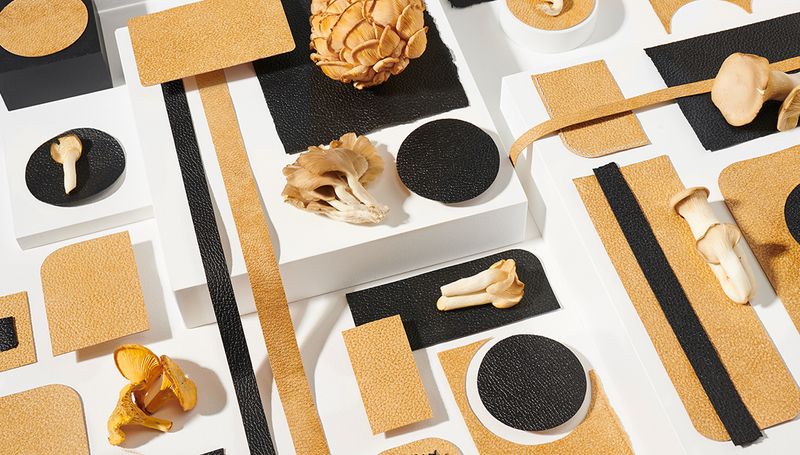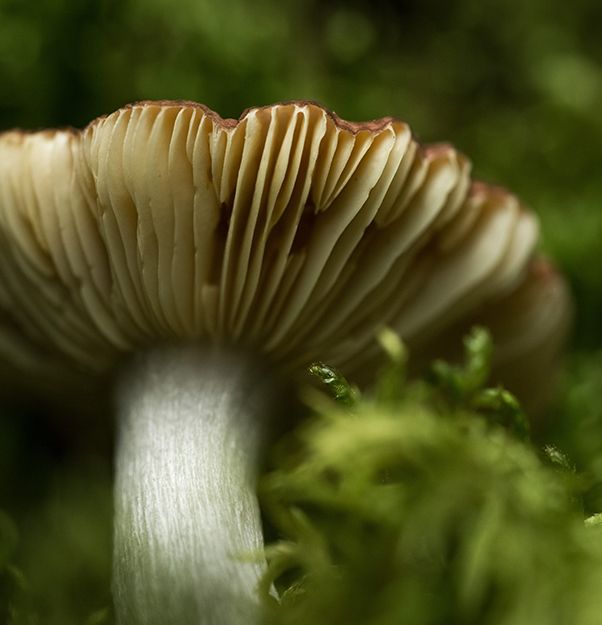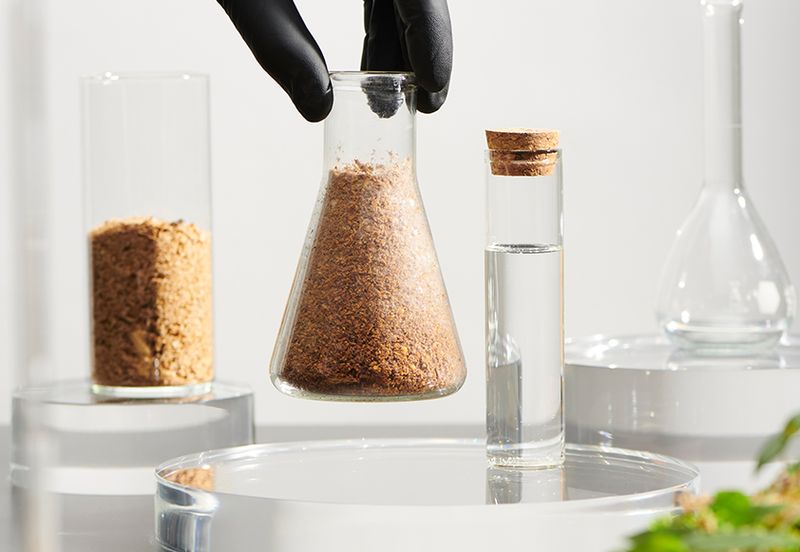Mushroom Leather: Everything You Need to Know about Mylo


Mylo™ material is created from mycelium: a vast, renewable, interconnected web naturally found beneath forest floors. We grow it in a controlled environment and process it to create sheets of Mylo™ material that resembles leather’s texture and is being honed for durability.


The Basics of Mushrooms and Mycelium
Mycelium and mushrooms are part of the fungi kingdom. Think of mycelium as the underground root-like structure from which mushrooms grow. There are over 14,000 species of mushrooms, and they all sprout from different types of mycelium. Essentially, mushrooms are the fruit of a particular mycelium network.
Mycelia are found all over the world. They can be almost invisible to the human eye, span thousands of acres in a forest, or anywhere in between. Each type of mycelium creates its fruiting bodies, aka mushrooms, when the right conditions are present.
Mycelium needs a food source to grow. In the wild, mycelium’s dinner of choice is wood or plant waste. Hyphae, or threadlike filaments that form mycelium, extend below the ground in a complex network to reach water and break down nutrients before absorbing them.
Digestive enzymes are secreted from hyphae, breaking down surrounding organic matter in the soil, fallen trees, or surrounding leaves. Mycelium absorbs the remaining nutrients, and in turn, creates more hyphae, and mycelium grows into a larger, connected network.
Mylo™ material is made of mycelium, not mushrooms. Mycelium grows in a flat, foam-like sheet that can be processed in a similar way to animal leather.


How Is Mushroom Leather Made?
The mycelium in Mylo™ material is grown in a controlled environment. Mycelium spores are fed a mixture of sawdust and other organic material that helps mycelium grow into a thick sheet.
Environmental conditions such as temperature and humidity in the mycelium’s environment all contribute to the mycelium’s growth. Controlling these factors can speed up the mycelium’s growth and prevent mushrooms from forming.
Spores of mycelia and the nutrient-rich sawdust mixture are placed on a large mat, where it grows into a thick, foam-like substance. Once the mycelium is harvested, the leftover byproducts are composted. The resulting sheet of mycelium is then processed and dyed to become Mylo™ material for use as an alternative to animal leather or synthetic lather in the fashion industry.
Learn more about the mycelium-based leather alternative.
Discover MyloOther Leather Alternatives
Synthetic leathers are often made from polyurethane (PU), polyvinyl chloride (PVC), or a textile-polymer composite. These leathers are sometimes referred to as vegan leather, faux leather, vinyl, or simply synthetic leathers.
Although they do not use animal hides for their creation, they still undergo chemical processing during their manufacture and can have a profound environmental impact.


Is Mushroom Leather Sustainable Compared to Animal and Synthetic-Based Leathers?
Unlike animal leather, making Mylo™ material doesn’t involve raising livestock. As disposable incomes rise around the globe, so will the demand for meat and leather goods. The mycelia grown for Mylo is produced in days, without the resource intensity of raising livestock, which can take years.
Synthetic leathers are often made from polyurethane or have a PVC coating to mimic the feel of natural leather.
Unlike other synthetic leathers, Mylo™ material is made from mycelium and is not petroleum-based. Additionally, Mylo’s processing and finishing chemistries are intentionally evaluated and selected using Green Chemistry principles.